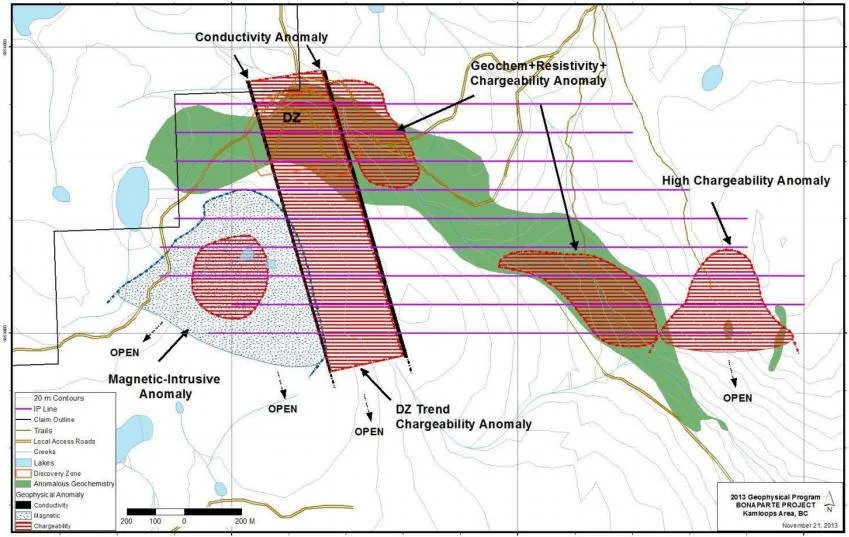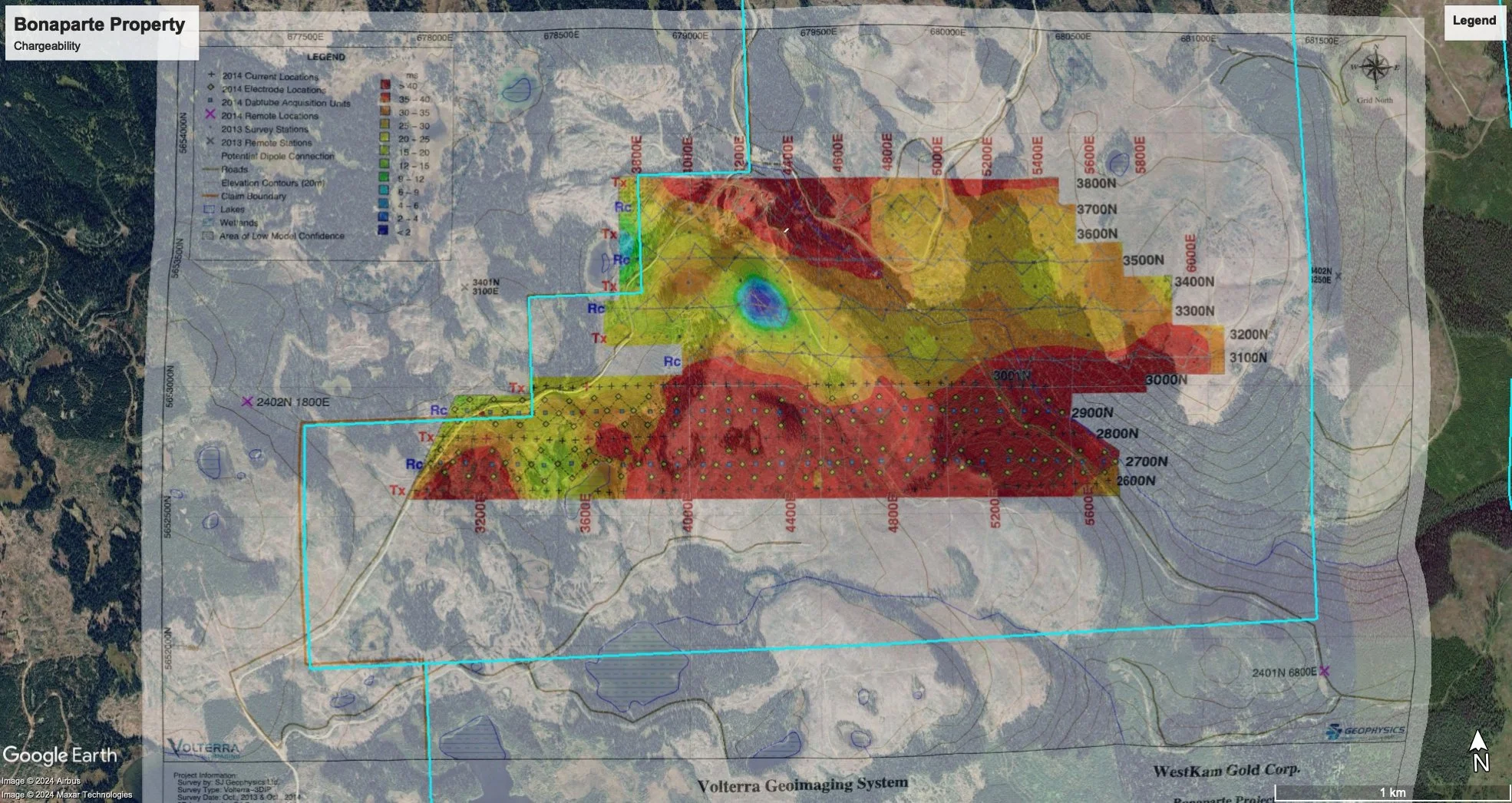BONAPARTE CONTINUED
Another interesting component of the Bonaparte property is the two predominant rock types that have been identified on the property.
The 1st is quartz diorite (porphyry) comprising much of the mineralization found in the near surface (Discovery Zone) gold system.
The 2nd is monzodiorite porphyry.
Two, 20 kg, monzodiorite samples (270m apart) were taken as part of a 2013 Geological Fieldwork report and sent out for U-Pb Zircon Geochronology testing. A 3rd sample of sericite-altered intrusion associated with quartz-carbonate veins and gold mineralization was also sent out for Ar40-AR39 analysis. The testing proved the two rock types are approximately 23 million years apart in age, and the quartz diorite hosting most of the known gold system is younger than the porphyritic monzodiorite which was initially thought to be the opposite by Logan & Mihalynuk (2012).
Below is a map indicating the locations of the two samples (small, teal-coloured squares). Below that, is a picture of a large monzodiorite porphyry boulder situated not far from the monzodiorite sample location and below that is a picture and location of a Porphyritic float sample from alongside the west side of the large pit.
Although the report disproved the theory the known Bonaparte gold system was the same age as the Brenda Mine or Woodjam deposits as previously thought by Logan & Mihalynuk, it did prove the known gold system (Middle Jurassic - quartz diorite (porphyry) is approximately (~166Ma) and that the older monzodiorite (Early Jurassic - monzodiorite porphyry) is ~189Ma.
How this changes anything, or what this all means, is yet to be determined.
Even though there is no way to determine the age of the geophysical bodies at depth (identified and depicted in ARIS 35749) until they can be drilled, if they turn out to be diorite or monzodiorite intrusions, both rock-types have an excellent chance of hosting mineralization of one kind or another. If a porphyry system is discovered and the Discovery and Cooler Creek Zones turnout to be an overprint of a buried porphyry system, the story will be complete. It also will be interesting to find out if the geophysical bodies identified at depth turn out to be ~166Ma quartz diorite or 188 Ma monzodiorite. At the end of the day as long as they turn out to be high-grade sulfide bodies, that is all that matters. Only 25+/- drill holes to go. 😉
CONCLUSIONS
The Bonaparte Property, characterized by a geological mix of granodiorte and basalt holds significant potential for copper, gold porphyry mineralization. The Discovery Zone, known for its high-grade mineralization primarily hosted in dark diorite to diorite porphyry, aligns well with resistivity and chargeability anomalies, suggesting a buried porphyry deposit beneath and to the South. The theory is that the zone is connected to a larger mineralized system, potentially through both horizontal and vertical pathways. The mineralization could extend from deeper sources or lateral extensions, influenced by geological structures and fluid flow pathways, making the Discovery Zone one of several critical targets for deeper drilling to uncover the full extent of the porphyry system.
The probability for the additional discovery of more high-grade quartz gold veins/mineralization while drilling through the upper 200+ meters, also remains excellent.
This is a good read:
BIG ROCK
Above is a mineralized boulder rightly named BIG ROCK, spotted during a June, 2023 site-visit.
The Big Rock 1 Video, showcases the mineralization present withing a 12” quartz vein running through the boulder.
NOTE: Videos are best viewed on a desktop computer with the screen brightness turned up to its fullest extent.



















